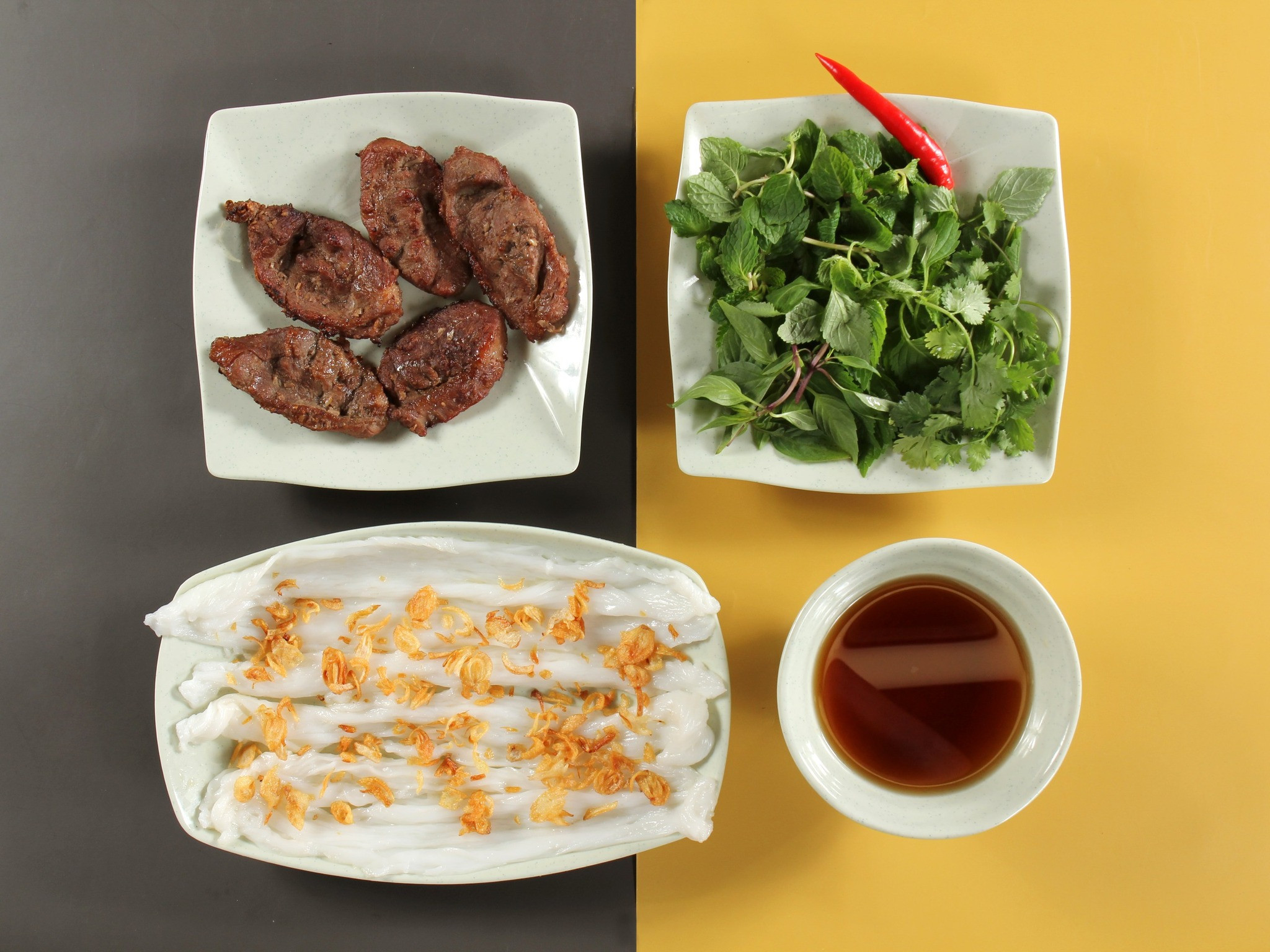
Vietnamese banh cuon is made mainly from rice. The rice used for banh cuon must be of the best quality. It is important to pick the rice that is not too soft or too hard for powdering so that it will not be crushed and milled into powder liquid.
High-quality rice will be soaked in water for 2-3 hours before being put in a traditional gristmill. The mixture of rice flour and water is stored at room temperature for 2-3 hours before the rolling process. A thin layer of rice batter is poured onto a piece of cloth and evenly spread to create a thin coat. The cook needs to be quick because the whole process above lasts just about 3 seconds. Then, they steam the roll and carefully take it out of the cloth. The result should be a thin and almost transparent rice roll. The cook will add fillings to the roll after it is steamed.
Depending on each variation of Vietnamese steamed rice roll, the ingredients are different. For Hanoi’s variation, ground pork and mushroom are must-haves. Meanwhile, for “banh cuon” in Cao Bang, the locals will add egg and bone broth. In Nghe An, the rolls do not include any fillings.
According to Traveler: “Banh cuon is just incredible. Everything is good, from the noodle soups to the grilled meats to the herby salads to the turmeric-heavy pancakes”.
Nine other dishes also made the list, including, Grilled Turbot of Spain, Oklahoma smash burger of the United States, Mole Negro of Mexico, Short Eats of Sri Lanka, Sushi of Japan, Ragu Napoletano of Italy, Sarawak Laksa of Malaysia, Duck Sausage Sanga of Australia, and Tahdig of Iran.
Ngoc Tan